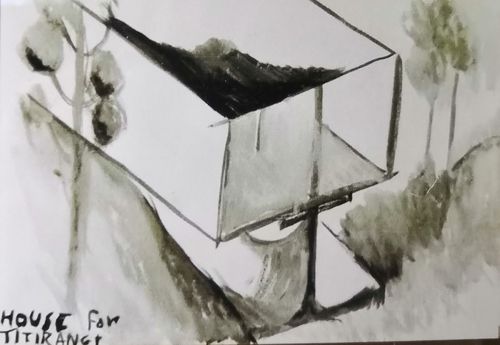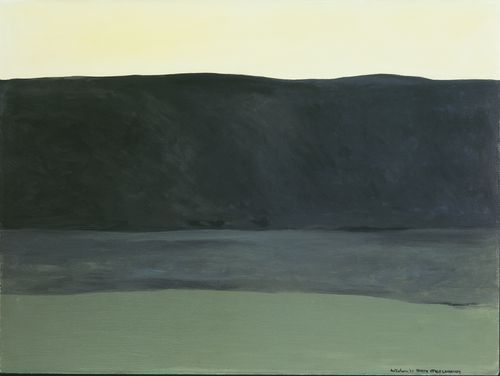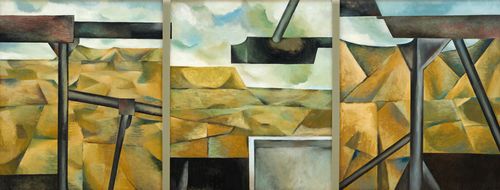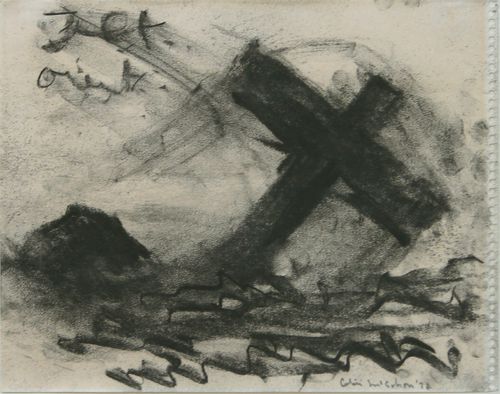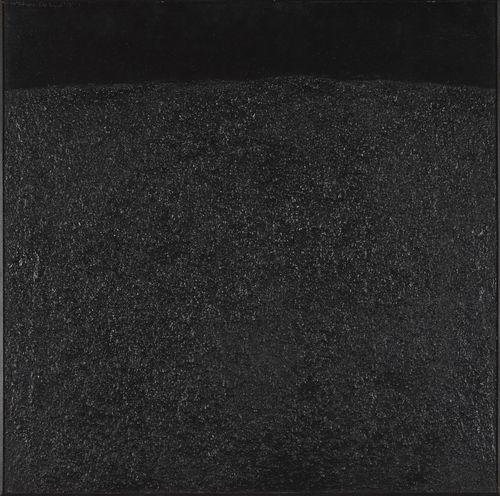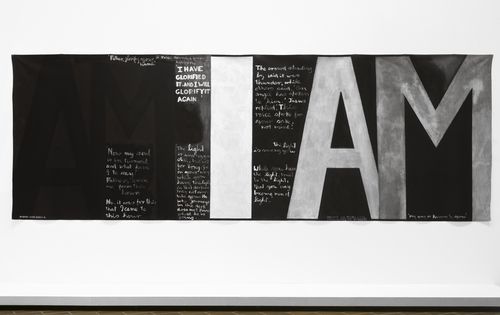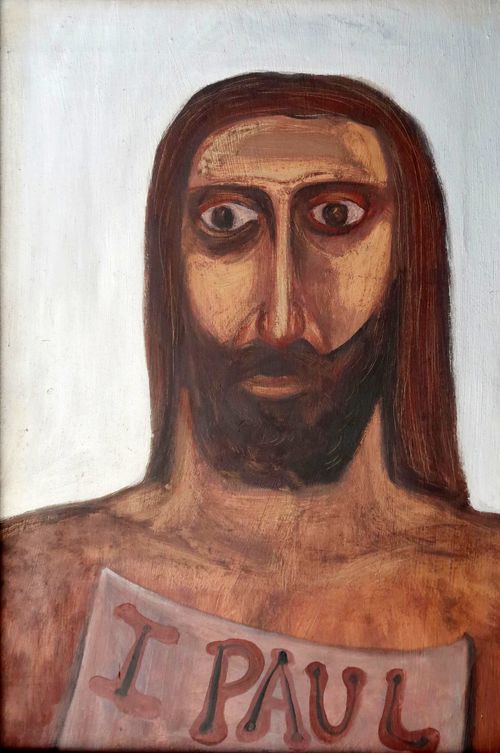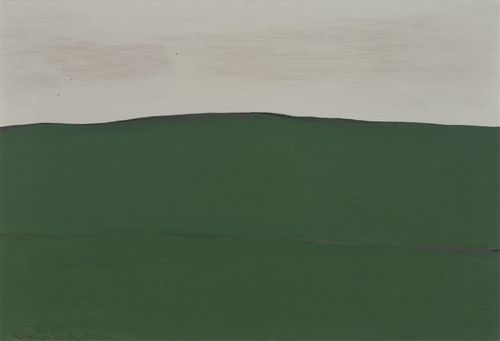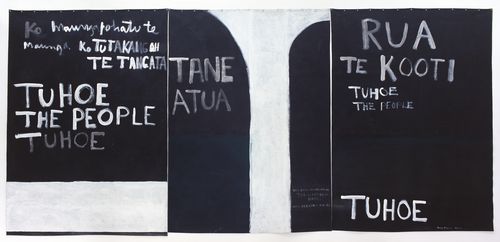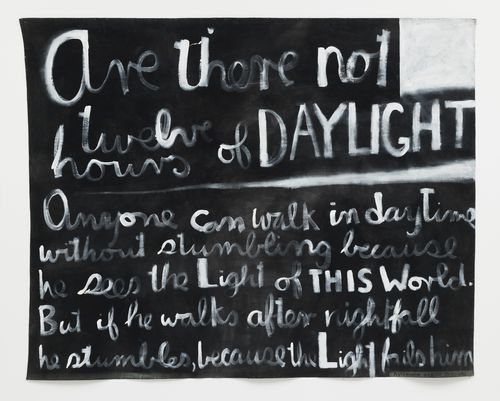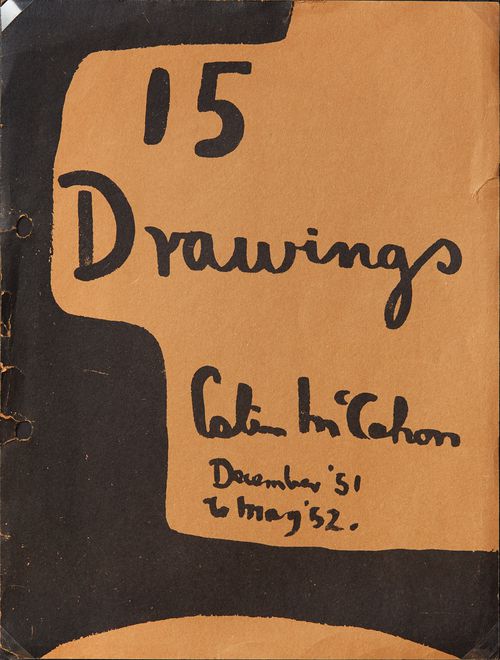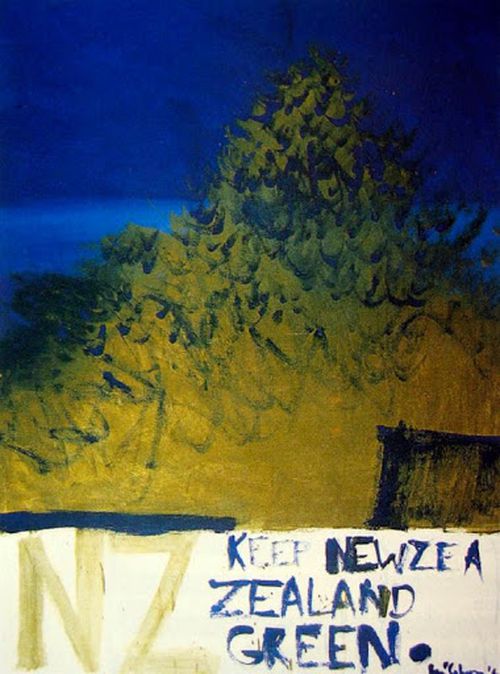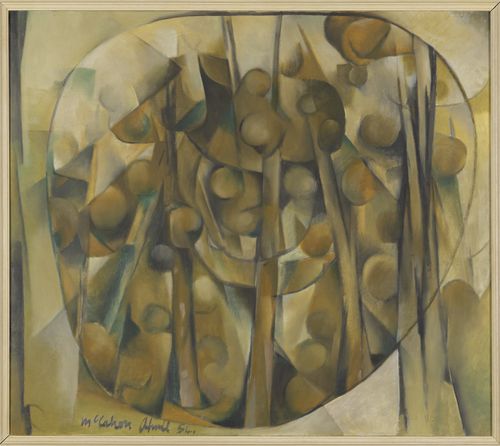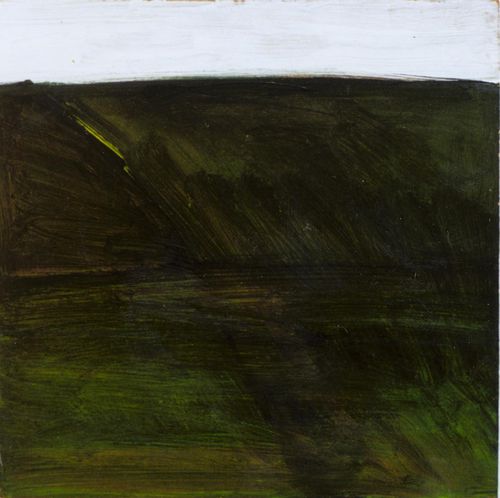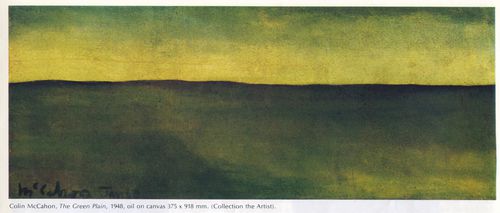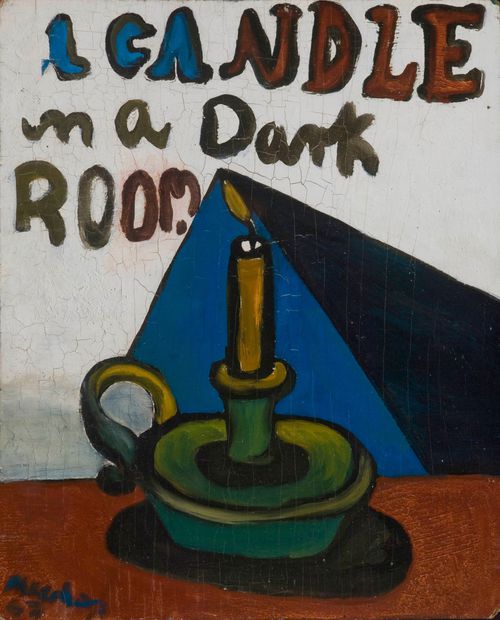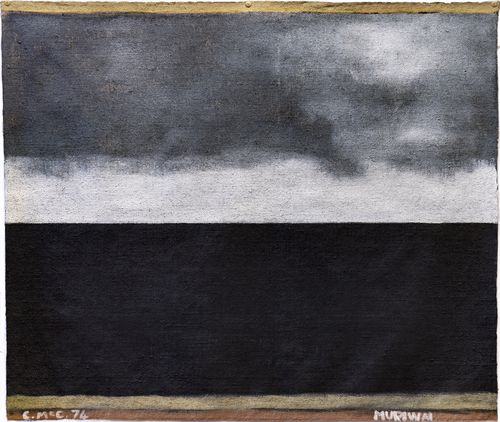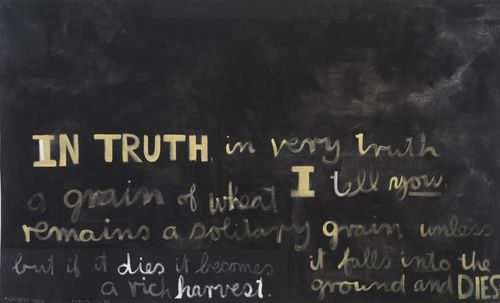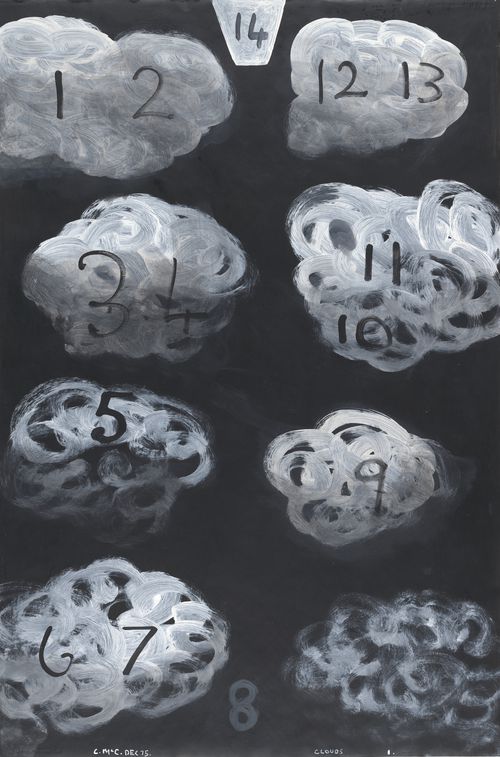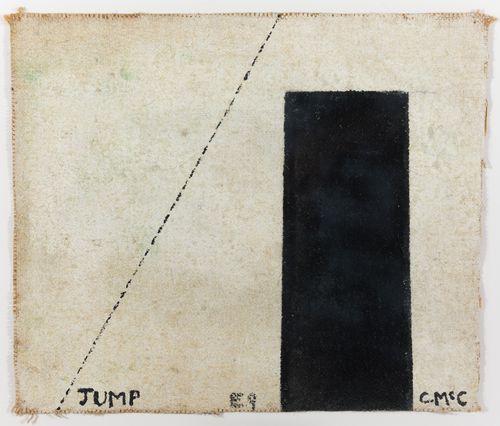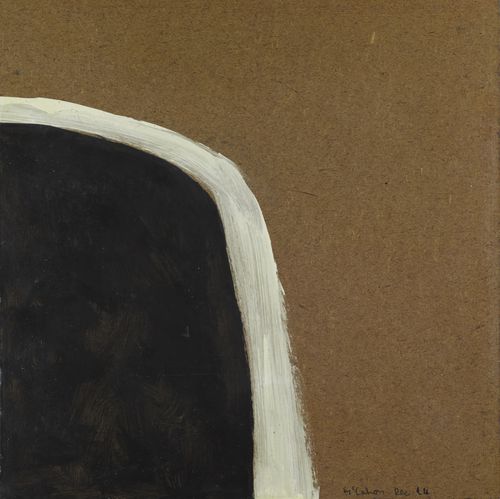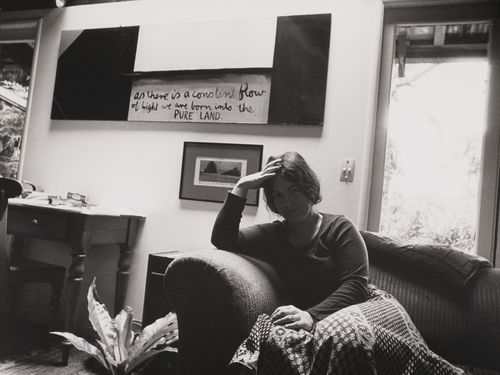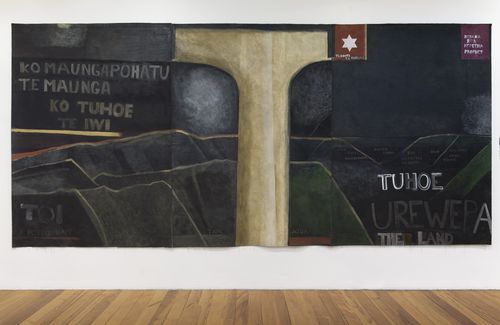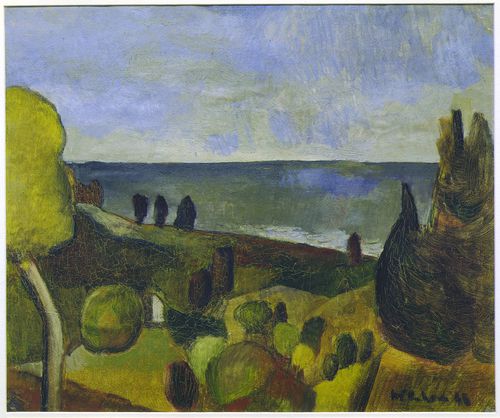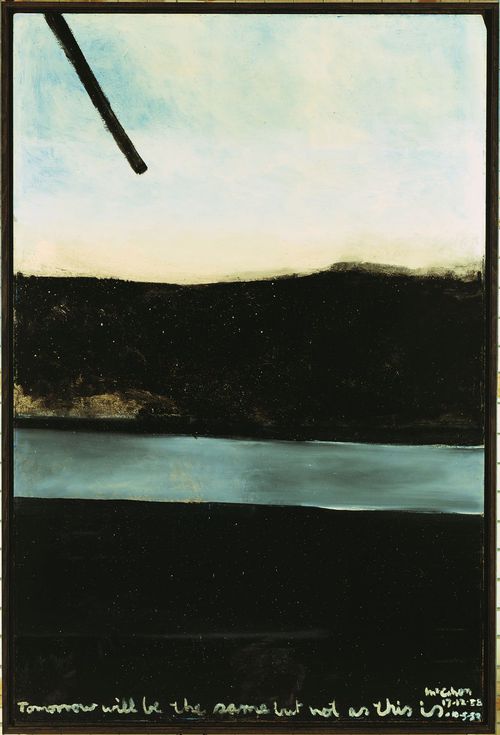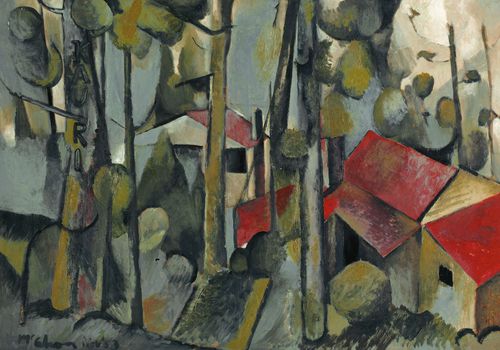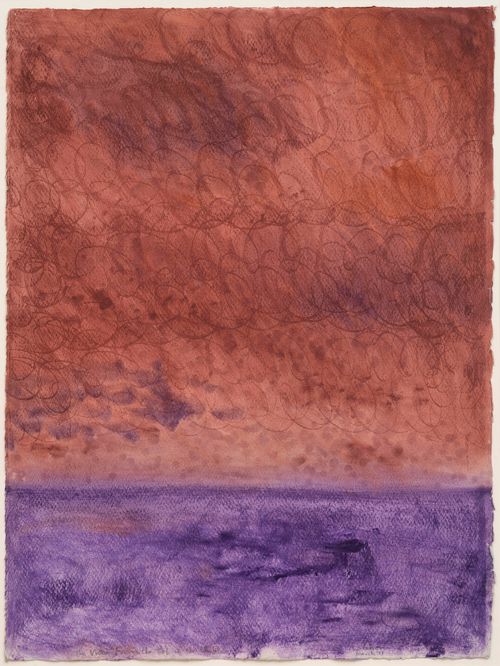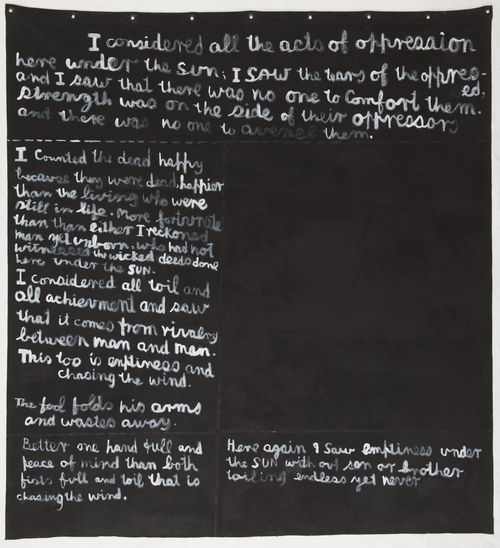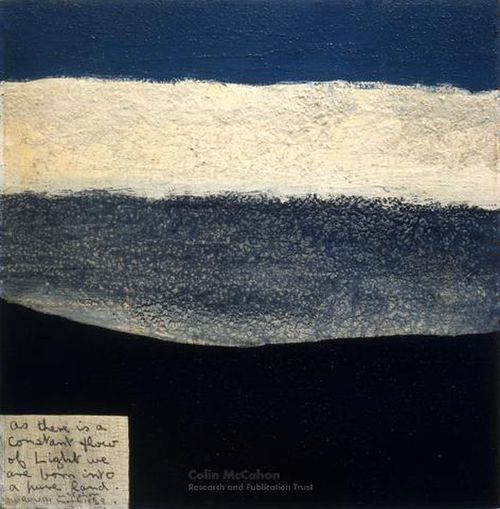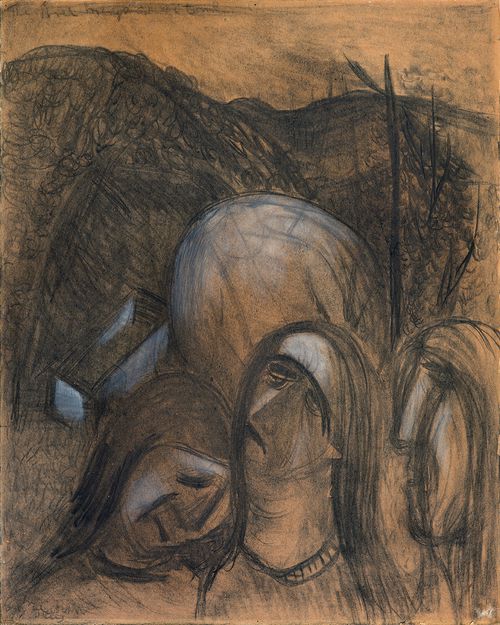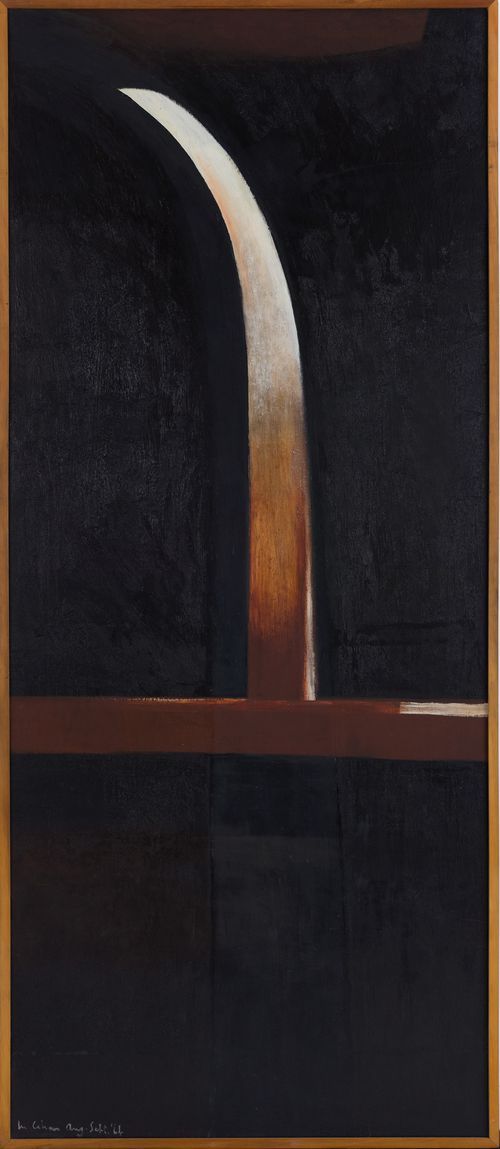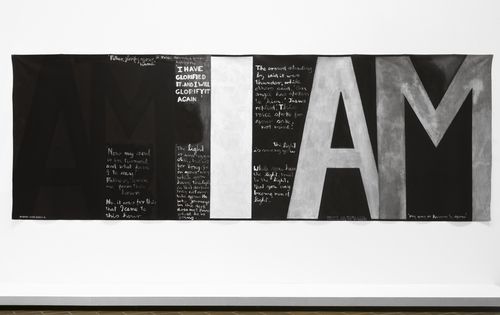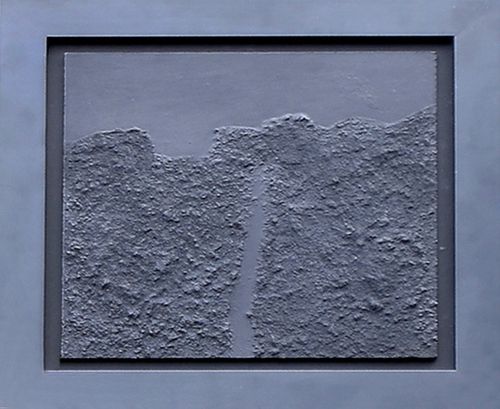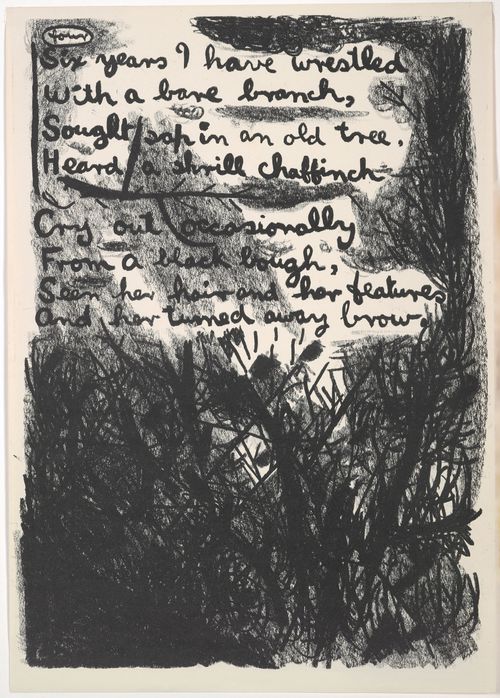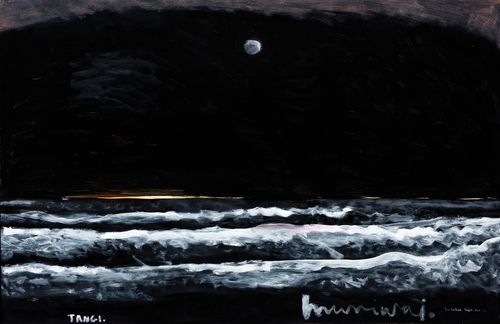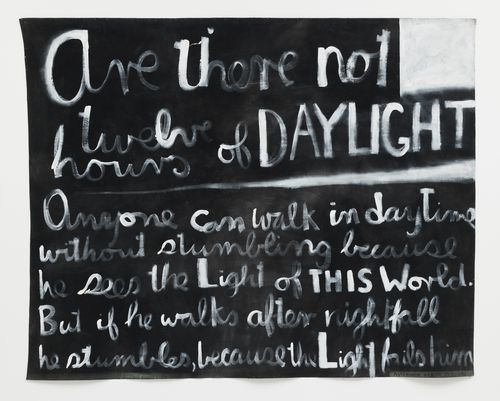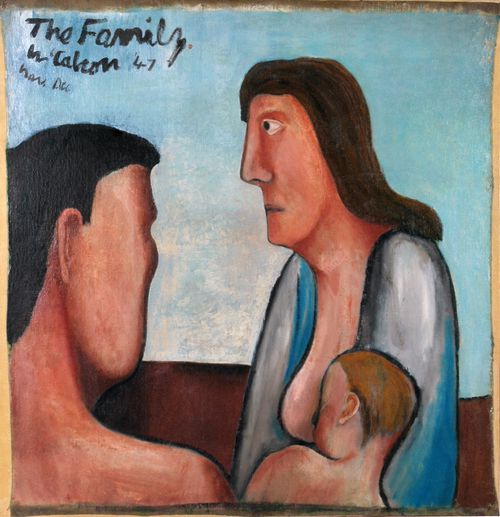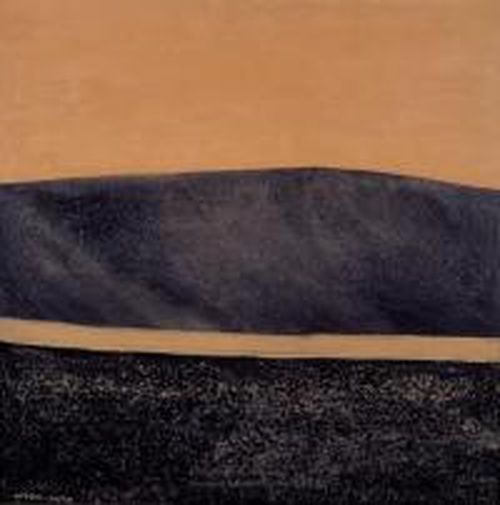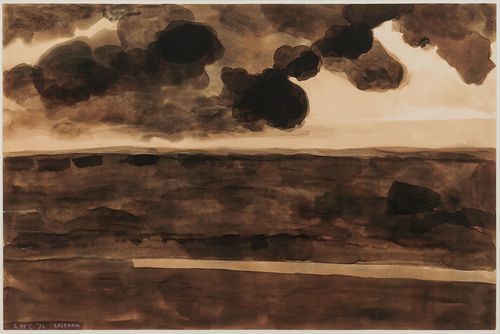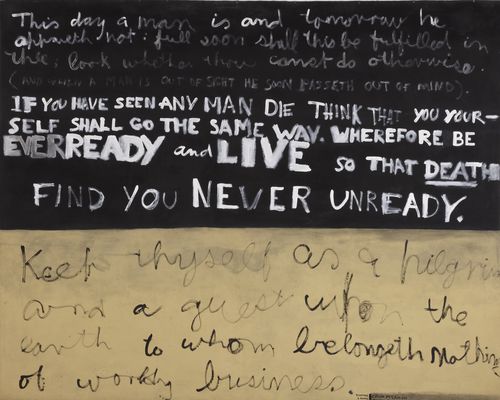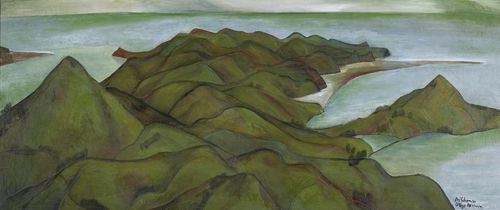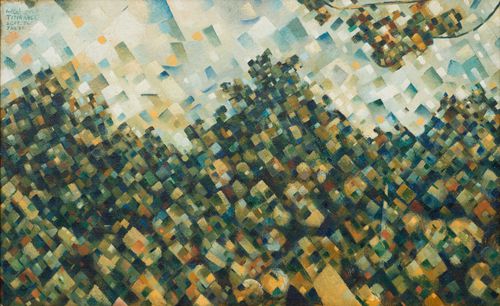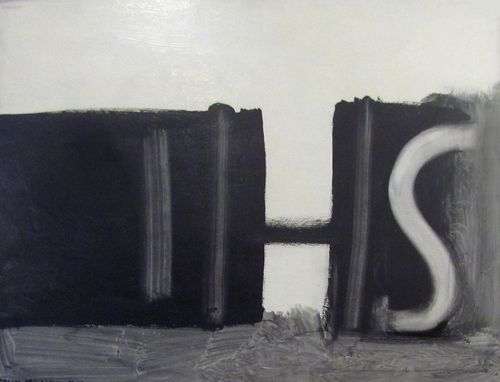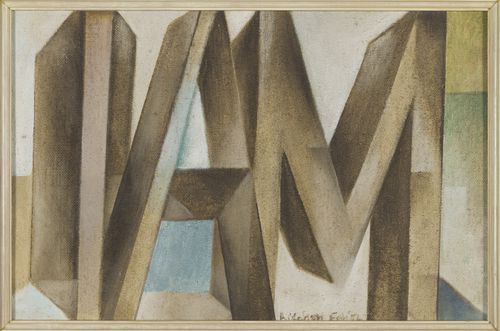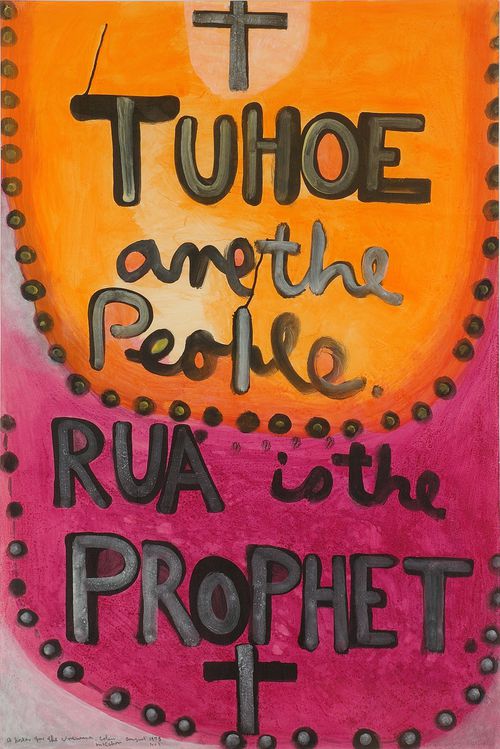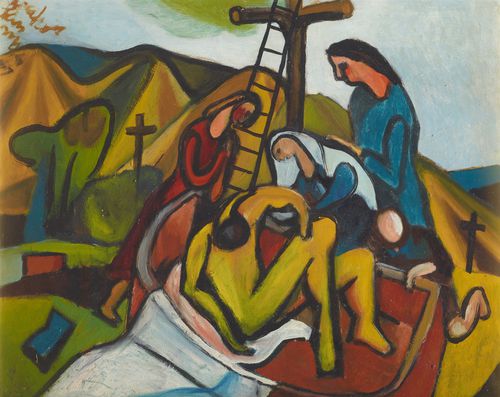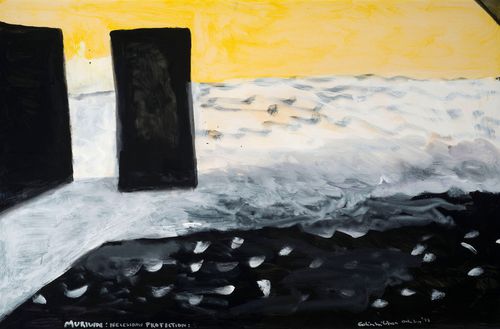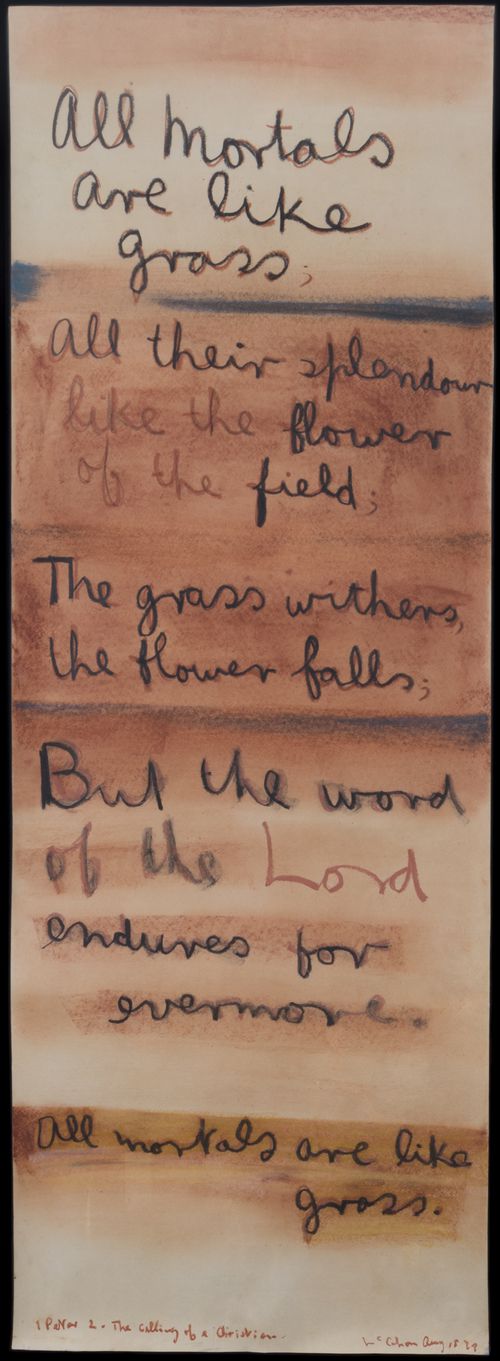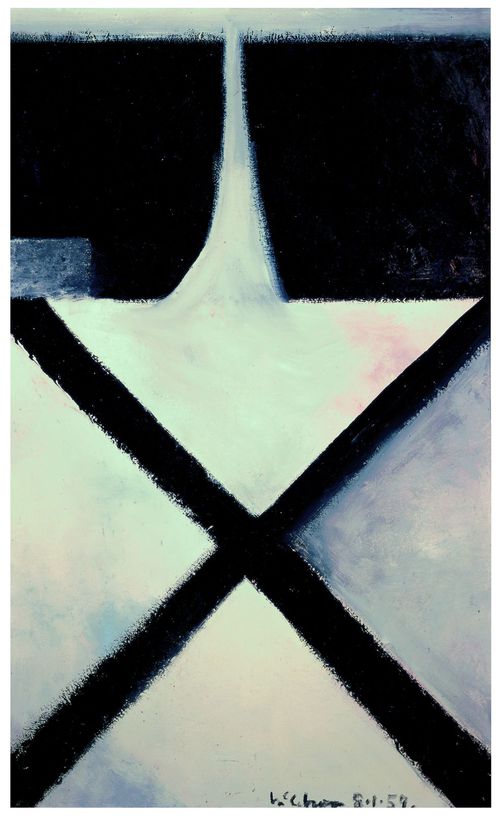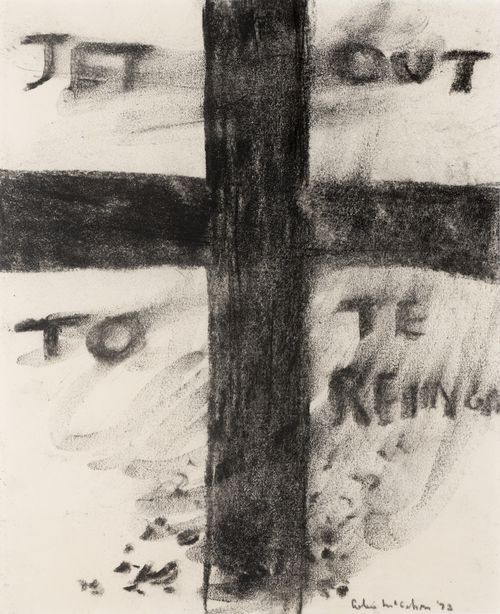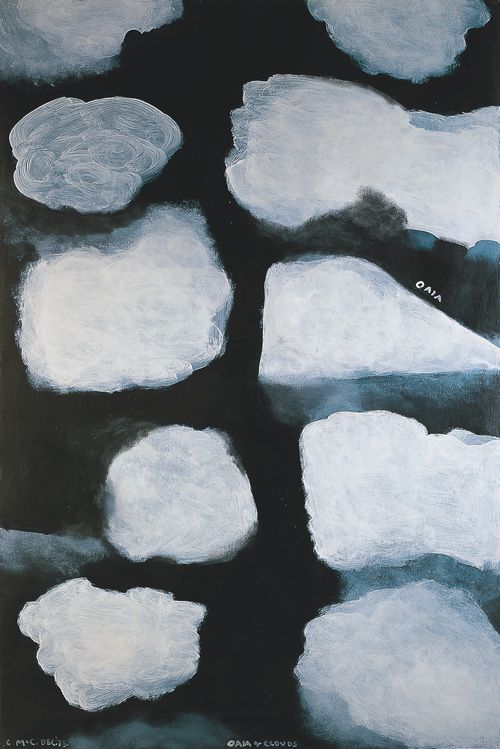Urewera mural
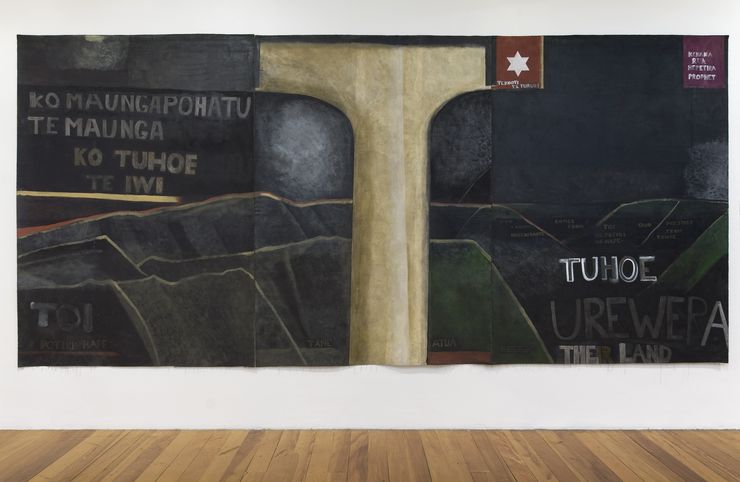
Colin McCahon, Urewera mural, 1975, synthetic polymer paint on three unstretched canvases, overall: 2158 x 5460 mm. Collection of Department of Conservation Te Papa Atawhai and Tūhoe Te Uru Taumatua, courtesy McCahon Research and Publication Trust.

Te Urewera Whenua, Google Satellite Map
Lisa Reihana
It is difficult being tasked to discuss just one of Colin McCahon’s paintings; there are so many incredible periods and different styles, struggles, words, and images. I’ve decided to perform a type of reclamation; a remembrance of different histories generated from one work. So here I give thanks to McCahon for this opportunity to draw lines from him to disparate but key moments. McCahon’s Urewera mural (1975) was originally commissioned for the Waikaremoana Visitor Centre in Aniwaniwa, Te Urewera. The work has a controversial history, but what I think it achieves is to remind us of McCahon’s willingness to engage with Māori spirituality and histories, set within a spectacular Aotearoa landscape. By creating this mural, he was plunged into iwi (tribe) and national politics in a way Gordon Walters and Theo Schoon were never engaged.
The substantial Urewera mural includes a pepeha that instantly locates it, ‘Ko Maungapōhatu te maunga, Ko Tūhoe te iwi, Urewera the land’ (Maungapōhatu is the mountain, Tūhoe is the tribe, Urewera is the land). References are also made to Tāneatua and the Māori prophets Rua Kēnana and Te Kooti. Their flight across Tūhoe whenua (lands), and deep spiritual engagement with Christianity would have resonated with McCahon. The centre panel has his emblematic, partially obscured capital I (I Am) which bisects the composition. This is the place where the viewer decides where they stand, ‘am I looking inwards or looking outwards?’ There is a further drypoint inscription which reads ‘At the boundary can I forbear / from turning back my head’. McCahon is evoking metaphysical questions, but boundaries are pivotal. Ngāi Tūhoe, an iwi that never ceded land rights, a proud nation whose territories and wealth were confiscated by the Crown under their scorched earth policy. Jump forward in time to the theft of the Urewera mural in 1997, an act of non-violent activism that was widely reported in the media and entered New Zealand’s imagination. Jump forward another ten years to the police raids in 2007 when this community was again confronted by guns and the might of the law; a sickening reminder of yesteryear’s mistreatment of this noble iwi.
And back to the land, the Waikaremoana Visitor Centre was designed by the Māori Modernist architect John Scott. It was appropriate that Scott was chosen to create the building where the Urewera mural hung for so long, as his practice included the creation of many beautiful chapels and churches. The centre was a wonderful building that was poorly administered and badly neglected by a Crown entity. Sadly, it was demolished in September 2016, despite protests from Scott’s family and the architectural community, and its Category I Historic Place classification. The mural’s value far outstripped the building’s worth. The Urewera mural was now recognised for its significance and importance, and its eventual return was brokered by Tame Iti, Te Kaha and Dame Jenny Gibbs. However, the theft signified the confiscation of lands, and further reinforced the point that the cultural value to Tūhoe was for their lands and its people. This was a political act to provoke more meaningful dialogue.
In 2000 I was invited by curator Terry Firkin (Archill Gallery) to participate in a hikoi (walk the land) from Maungapōhatu to Tāneatua with a group of artists. This provided me with profound insights into the place, sheltering in a small whanau wharemoe (family sleeping house), tracing Te Kooti’s footsteps, and staying in the wharenui Te Whai-a-te-Motu that Ngāi Tūhoe built in his honour. As we trekked through Te Urewera we encountered pilgrims as they enacted their own spiritual journeys; bible in one hand, a hunter’s gun in the other. Firkin was a prankster and commissioned a Māori artist to make a full-scale copy of the mural. This was shown in Archill Gallery, just a stone's throw from where McCahon once lived. This provocative stunt provided Firkin no end of laughter in the retelling of police attempts to raid his gallery and remove what they thought, but wasn’t, McCahon’s now infamous mural. As a son of Ngāi Tūhoe, acutely aware of the politics the work evoked, he had now added to the history and provenance of the mural and to Tūhoe activism.
And so, Colin McCahon, you understood that value does not reside in the object, but in the deep dive; the engagement with people and ideas, the love of land, and the struggles with the soul. Your time in Titirangi is testament to living the hard yards, no matter how dark and cold it might be, being outside the limits. I like to imagine your approval of this activism, and the conversations that the Urewera mural has continued to provoke. You were never scared to look intently at difficult things.
Purchase a print publication of McCahon 100 here.
